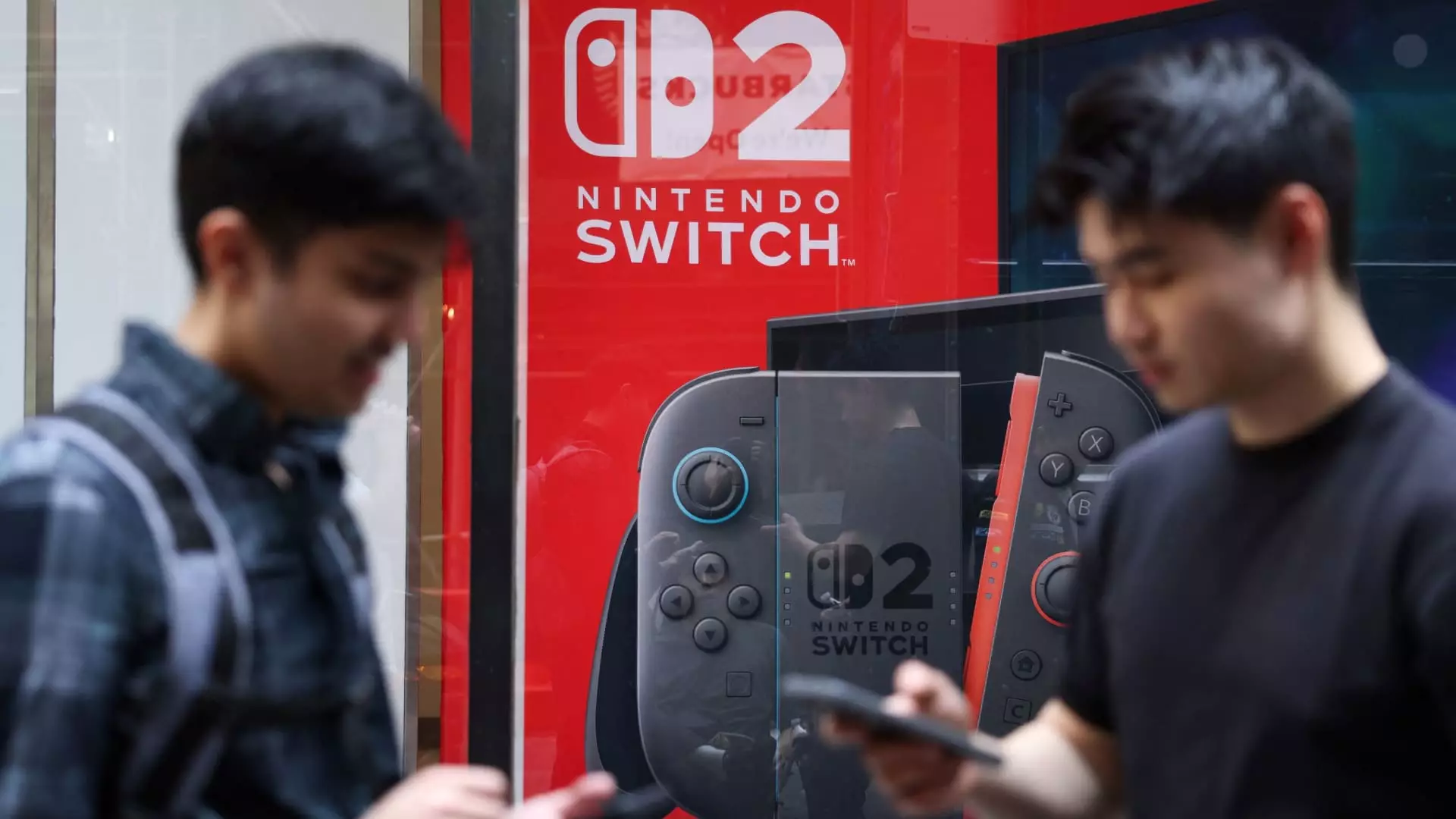The launch of the Nintendo Switch 2, following the massive success of its predecessor, has reignited a passionate debate among gamers and analysts alike. With the original Switch selling over 152 million units globally, one would naturally expect the hype surrounding its successor to reach heightened heights. Special store openings, fevered fans camping out for consoles, and reports of stock shortages infused a sense of urgency and excitement that the gaming community rarely experiences. However, one must ask—should we elevate the Switch 2 to heroic status or are we merely settling for another iteration of an already established formula?
While the marketing narrative presents an image of insatiable demand, a critical examination reveals a troubling paradox. Nintendo’s previous console was revolutionary, proficiently merging home console and mobile gaming experiences. The confusion arises when one evaluates whether the Switch 2 brings anything significantly novel to the table. The term “game-changer” often gets thrown around recklessly. Is the excitement truly justified, or is this more of a rehash of ideas that have already proven successful?
Supply and Demand: A Manufactured Shortage?
The recent launch saw overwhelming response rates, particularly in Japan, where Nintendo President Shuntaro Furukawa noted that 2.2 million eager buyers entered the lottery system for a chance to acquire a Switch 2. Yet, we must ponder the implications of such numbers. Stock shortages can create an illusion of demand, painting a picture of scarcity that retailers and manufacturers exploit. This phenomenon is not new in tech circles; it’s a time-honored strategy designed to stoke consumer desire. While I’m no economist, it strikes me as suspicious when a company like Nintendo, with vast experience, faces supply chain “shortages” during such a crucial rollout.
With reporters blaring the horn of “unprecedented demand,” I find myself rolling my eyes. Could it be that Nintendo and various retailers are deliberately staggering availability to maximize hype and drive future sales? In the age of online shopping and instant gratification, does the scarcity model truly hold water, or are we merely being played once again?
Forecasting Success: Reality vs. Idealism
Nintendo is projecting an ambitious expectation of selling 15 million Switch 2 units by next March, a figure that has already drawn skepticism from industry analysts. Some even forecast sales upward of 20 million in the first year alone. While it is tantalizing to imagine the Switch 2 breaking records and capturing hearts, does anyone genuinely believe that these projections reflect reality? After all, the gaming market is more dynamic now than it has ever been, with competition from both traditional and emerging platforms.
On one hand, you have the existing user base of the original Switch, which could easily translate into an automatic audience for the sequel. On the other hand, you face a grimmer reality—many consumers may feel that the novelty has worn off. The critical question is whether the advancements promised by Nintendo can seduce those who are already entrenched in other ecosystems, such as Xbox or PlayStation. If history teaches us anything, it’s that initial excitement does not always sustain longevity in the market.
The Role of Innovation: Or Lack Thereof?
Let’s address the elephant in the room—the innovation that is supposed to accompany the Switch 2. Nintendo’s competitive edge has historically been creativity, a factor that has faded more recently. The hybrid model of the Switch was groundbreaking back in 2017, but it’s questionable whether the company has remained a vanguard in gaming technology or whether it has become content with mere evolutionary upgrades.
The industry is flooded with new ideas like augmented reality and advanced VR capabilities. Yet here we are, celebrating yet another handheld console. Missing the opportunity to embrace transformative gaming mechanics feels like a squandered chance. A frustrating sentiment arises as we contemplate whether Nintendo has traded in revolutionary ideas for marketing tactics designed to captivate nostalgic gamers while simultaneously drawing them back into an increasingly saturated market.
Community and Connection: Echoes of Nostalgia
Lastly, it’s crucial to discuss the communal aspect that gaming provides. Nintendo has cultivated a devoted community that thrives on nostalgia and interconnected joy, and they capitalized on this beautifully with the original Switch. However, as we launch into this new era with the Switch 2, there’s an undercurrent of skepticism. Are gamers being led to the promised land of community expansion and innovative gameplay, or are we merely reliving the glory days of old?
In an age rife with choices and rapidly evolving technologies, the Switch 2 stands at a crossroads—either a beacon of hope with fresh innovation or a banner for stagnation masked as celebration. Only time will tell if the Switch 2 can indeed break new ground or if we’re simply rehashing the past, garbed in shiny, new packaging.

